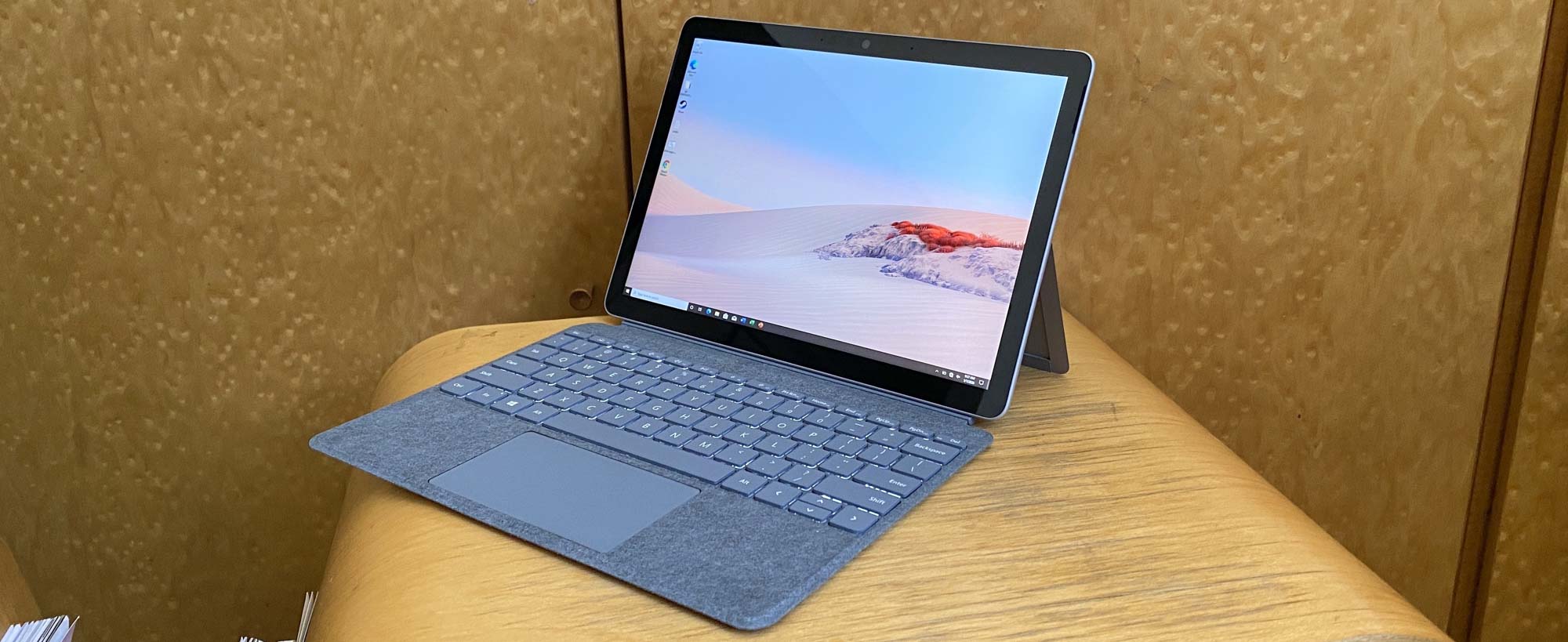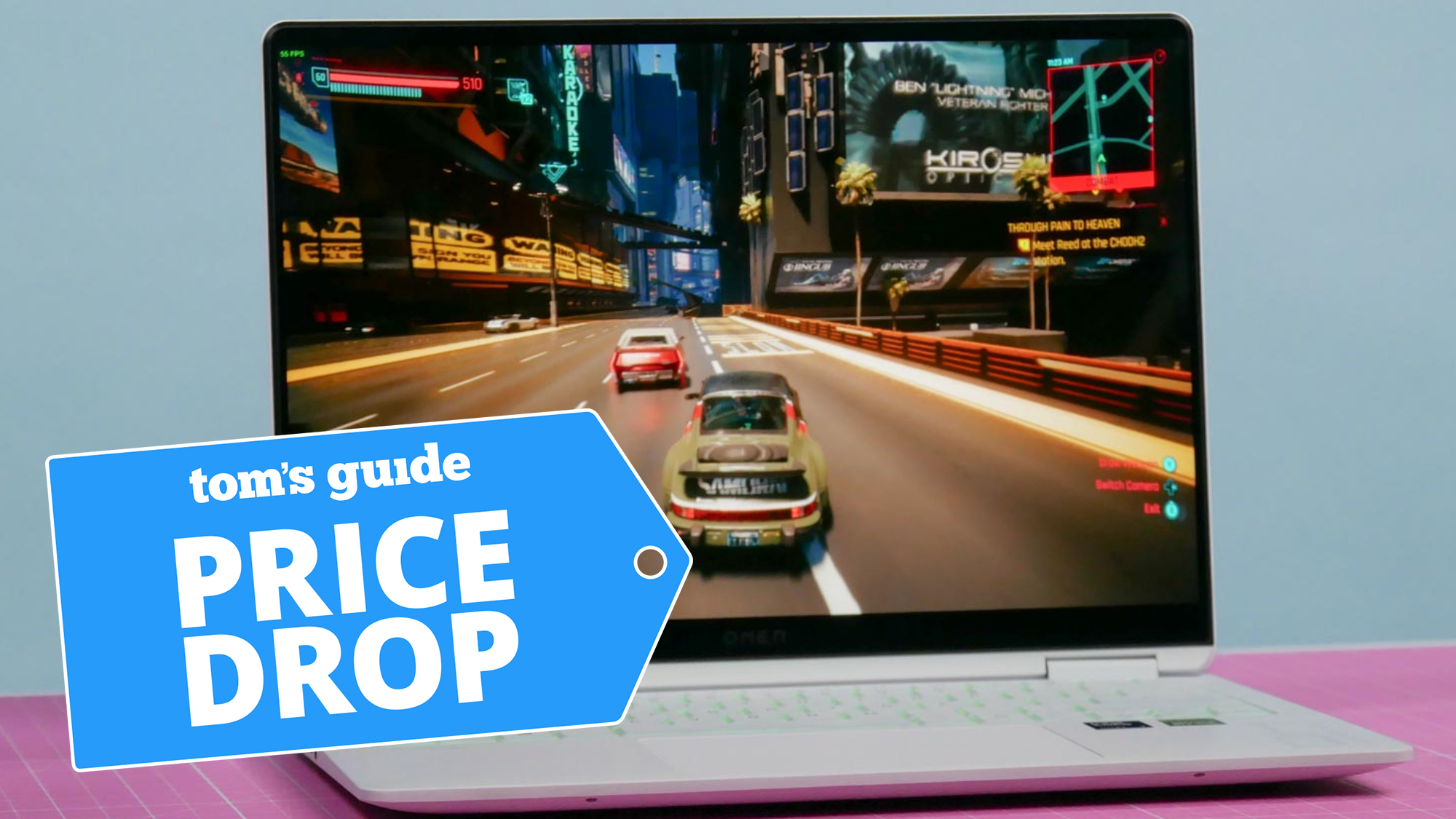Tom's Guide Verdict
The Microsoft Surface Go 2 is a solid tablet with great battery life and a solid screen.
Pros
- +
Much improved battery life
- +
Bright, colorful (and bigger) screen
- +
Thinner bezels streamline design
- +
Excellent webcam
Cons
- -
Performance doesn't impress
- -
Type Cover has a learning curve
Why you can trust Tom's Guide
Is the second time the charm for the Microsoft Surface Go 2? On paper, this tablet seeks to erase the issues of its predecessor, with more screen and less bezel. You also get excellent battery life on par with the iPad Air, plus a webcam that is actually sharp, unlike almost every internal camera I've ever tested on a laptop.
Starting price: $399
Tested price: $629
CPU: Intel Pentium Gold 4425Y
Graphics: Intel UHD Graphics 615
Display: 10.5-inches (1920 x 1280 pixels)
Memory: 4GB | 8GB
Storage: 64GB eMMC | 128GB SSD
Size: 9.7 x 6.9 x 0.3 inches
Weight: 1.22 pounds (1.75 pounds with type cover)
Cellular connection: LTE (optional)
Visually, the Surface Go 2 looks to fit into the modern landscape by shedding its bezels to fit a larger screen in the same chassis (Apple's done similar with the iPad 7th Gen). Combine that with improved specs over the original and an impressive webcam, and this Surface Go 2 review will show why it's an impressive low-cost machine for those working on the go and one of the best tablets (and best budget laptops) available today.
But while its Core m3 CPU offers a performance boost against the old Surface Go, it doesn't hold up to friendly competition against other 2-in-1s. Still, the Surface Go 2 is earning a spot on our best laptops and best 2-in-1 laptops lists, because it's a strong pick for the folks on a budget looking for a tablet designed for productivity.
Microsoft Surface Go 2: Price and configurations
The entry-level Surface Go 2 launched on May 6 and costs $399, but it doesn't include Microsoft's Surface Type Cover, which runs an extra $99 to $129. That model features a Pentium Gold CPU, 4GB of RAM and 64GB of eMMC storage.
Need more memory and want better storage? For an extra $150, you can bump that model to 8GB of RAM and a 128GB SSD, with a configuration that costs $549.
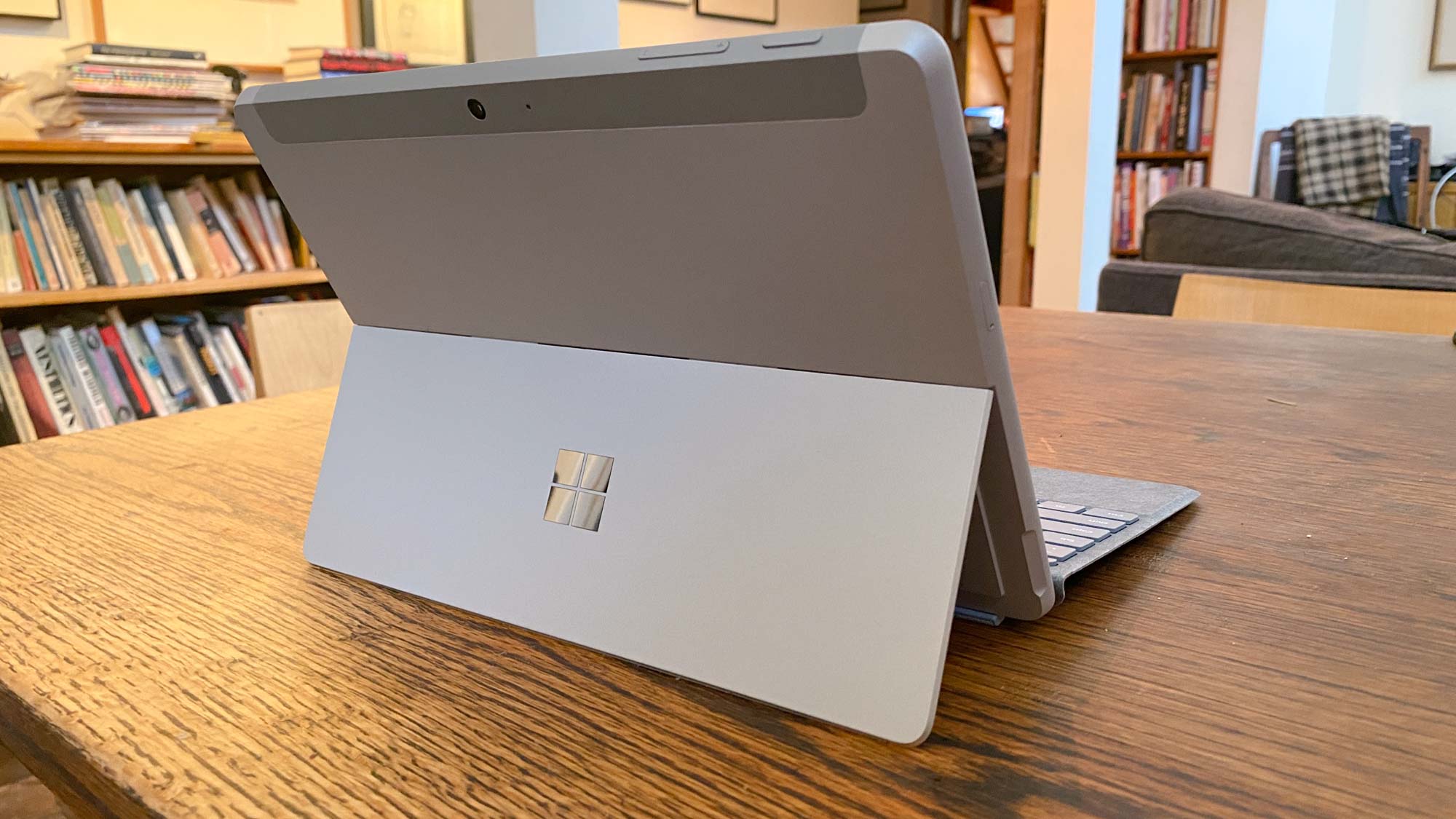
We tested a $629 configuration at launche that features an 8th Gen Intel Core m3 processor, which is rated to offer a 64% boost in CPU performance vs the Pentium Gold version — and this edition can now be bought for less than half of that since our initial review. It's also got 8GB RAM and a 128GB SSD. There's also a larger, more expensive 12.4-inch Surface Go 2 that often retails for around $649 on Amazon.
The Surface Pen costs $99, and Microsoft's new Surface Dock (for pairing with USB-C monitors and a wider range of accessories) runs you $259. All Surface Go 2 tablets support the the 802.11ax wireless standard otherwise known as Wi-Fi 6.
Microsoft Surface Go 2: Design and ports
The Surface Go 2 is nearly identical to its predecessor, at least until you turn it on and see the trimmed-down bezels surrounding its 10.5-inch screen. It's amazing what a little tweak can do.
Aside from that, the Go 2 is a lot like a smaller Microsoft Surface Pro 7. You've got a kickstand in the back that moves from 0 degrees (flat, in tablet mode) to 135 degrees, and there's a small notch for your finger tips to slide into to easily open it.
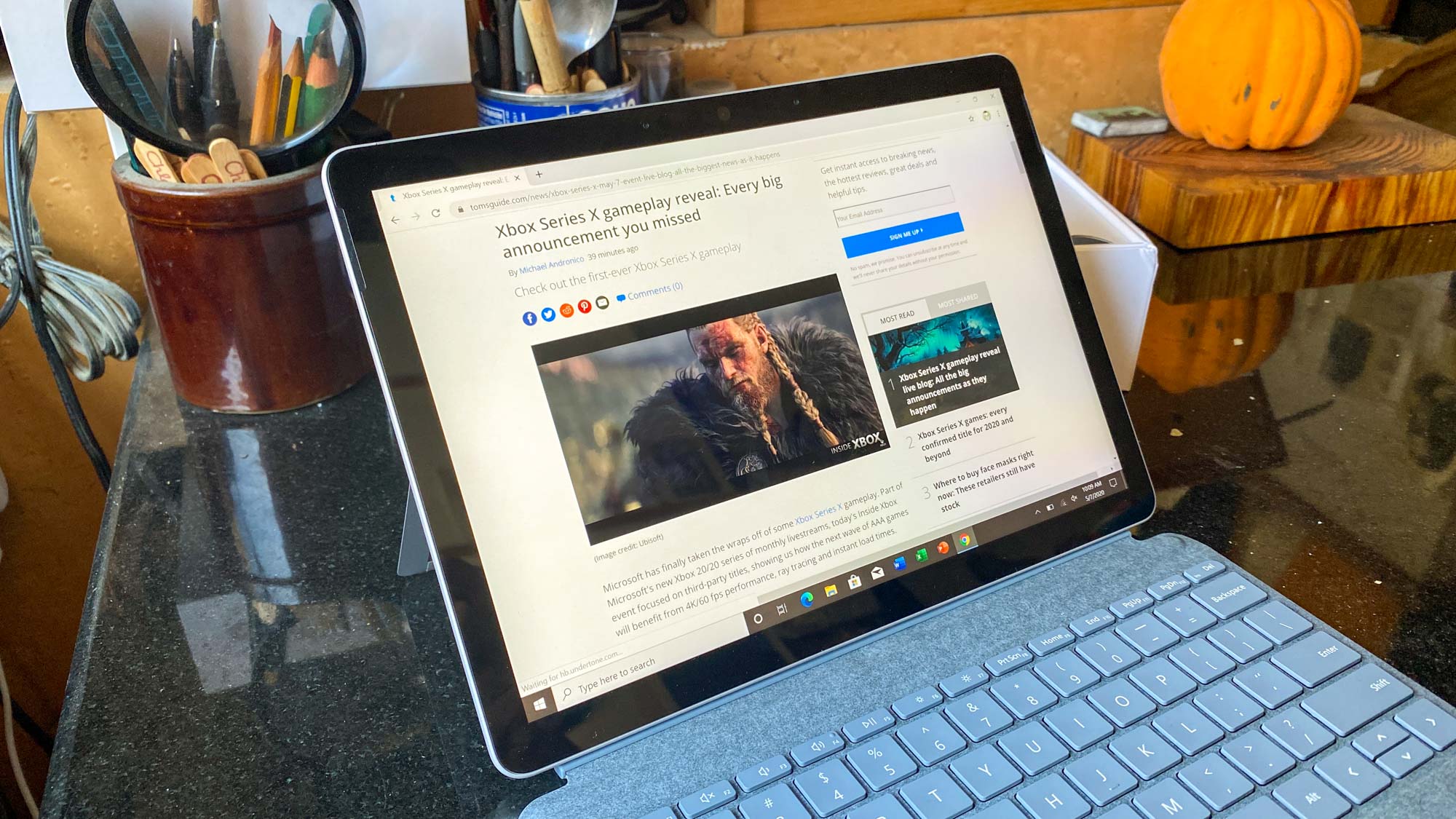
The Surface Go 2 measures 0.3 inches thick and weighs 1.25 pounds, making it lighter than the Surface Pro 7 (0.3 inches, 1.7 pounds). It's also a hair thicker and heavier than the Galaxy Tab S6 (0.2 inches, 0.95 pounds) and the iPad Air (0.2 inches, 1 pound). Attaching the Type Cover brings its thickness to 0.5 inches and adds a half pound, making it a still-light 1.75 pounds.
The Surface Go 2 looks a lot like its big brother, the Surface Pro, with a silver magnesium shell and reflective Microsoft logo on the back. It's nice that the Surface Go Type Covers are available in an Ice Blue (seen here), Poppy Red, Platinum and Black. But we wish Microsoft also offered similar striking colors for the Surface Go's chassis.
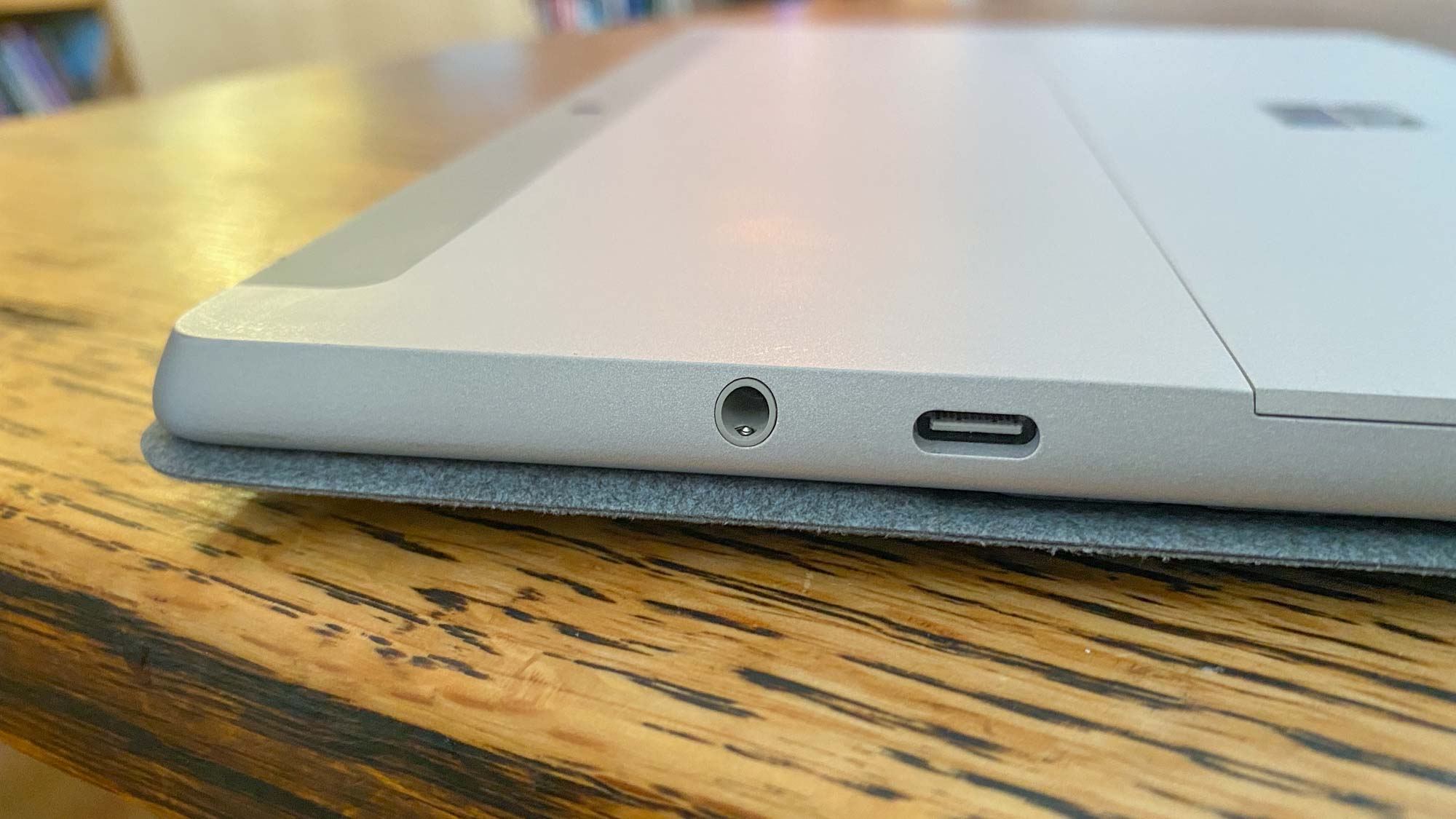
Most of the Surface Go 2's ports — the USB-C port, headphone jack and Surface connector — are on the right side, while the power and volume buttons sit on the top edge and the microSD reader is on the left. We'd love a USB-A port, which the Surface Pro 7 has, but alas.
Microsoft Surface Go 2: Display
As I watched the Wonder Woman 1984 trailer on the Surface Go 2, I noted how the tablet produced bright and accurate colors. That included accurate gold glimmers from Wonder Woman's boots and Kristen Wiig's glasses, vibrant reds in her armor and a range of verdant greens in oceanside flora. The only issue is that the Surface Go 2 picked up any and all ambient lighting be it direct or otherwise, with visible reflection.
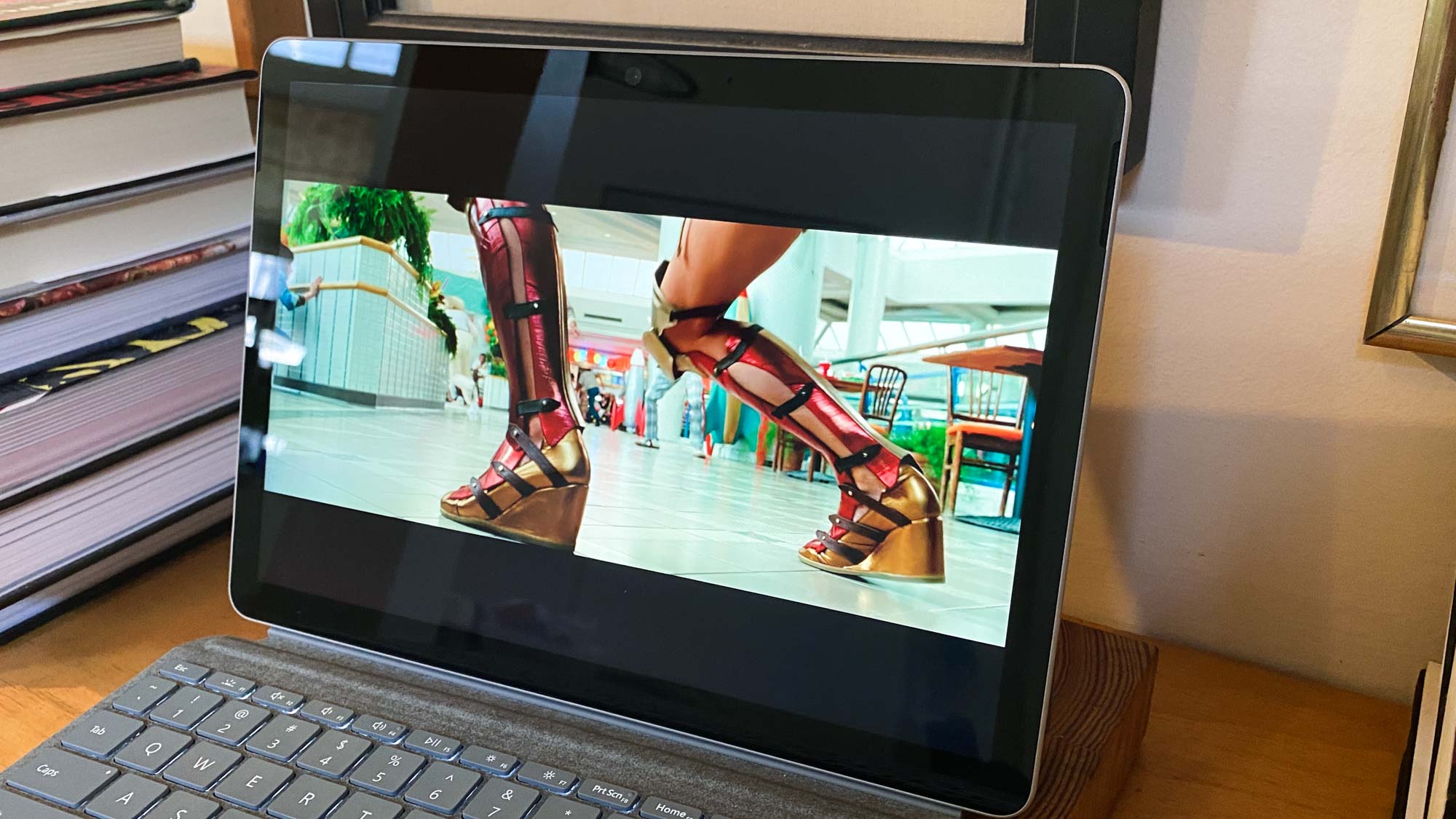
The Surface Go 2’s 10.5-inch PixelSense display measures 1920 x 1280 pixels and is a notable upgrade from the Surface Go's 1800 x 1200 10-inch panel. The additional screen space makes the tablet look a bit more modern, and closer to the thinner bezels of the Galaxy Tab S6.
Producing 107% of the sRGB spectrum, the Surface Go 2's panel is slightly more colorful than that of the Surface Pro 7 (97%). However, the iPad Air (132%) and Galaxy Tab S6 (122%) are even more colorful.
According to our light gun, the Surface Go 2 maxes out at an average of 408 nits. Again, that's slightly brighter than the 395-nit Surface Pro 7, while the 425-nit iPad Air and 473-nit Galaxy Tab S6 get even brighter.
Microsoft Surface Go 2: Type Cover keyboard
The Surface Go 2 doesn't change its optional (and pricey) accessories. The Type Cover (which costs between $99 to $129) we tested came in a Platinum hue and is covered in the soft Alcantara fabric, which makes a combination that's pleasing to look at and touch. It's also got three degrees of backlighting, so it can be as slight or bright as you prefer.
But I found a slight learning curve when typing on it (much like I did with Apple's Smart Keyboard Folio), as I clicked my way to between 64 and 67 words per minute with 90 to 93% accuracy on the 10fastfingers typing test. That's a bit of a fall from my 80 wpm/98% accuracy average.
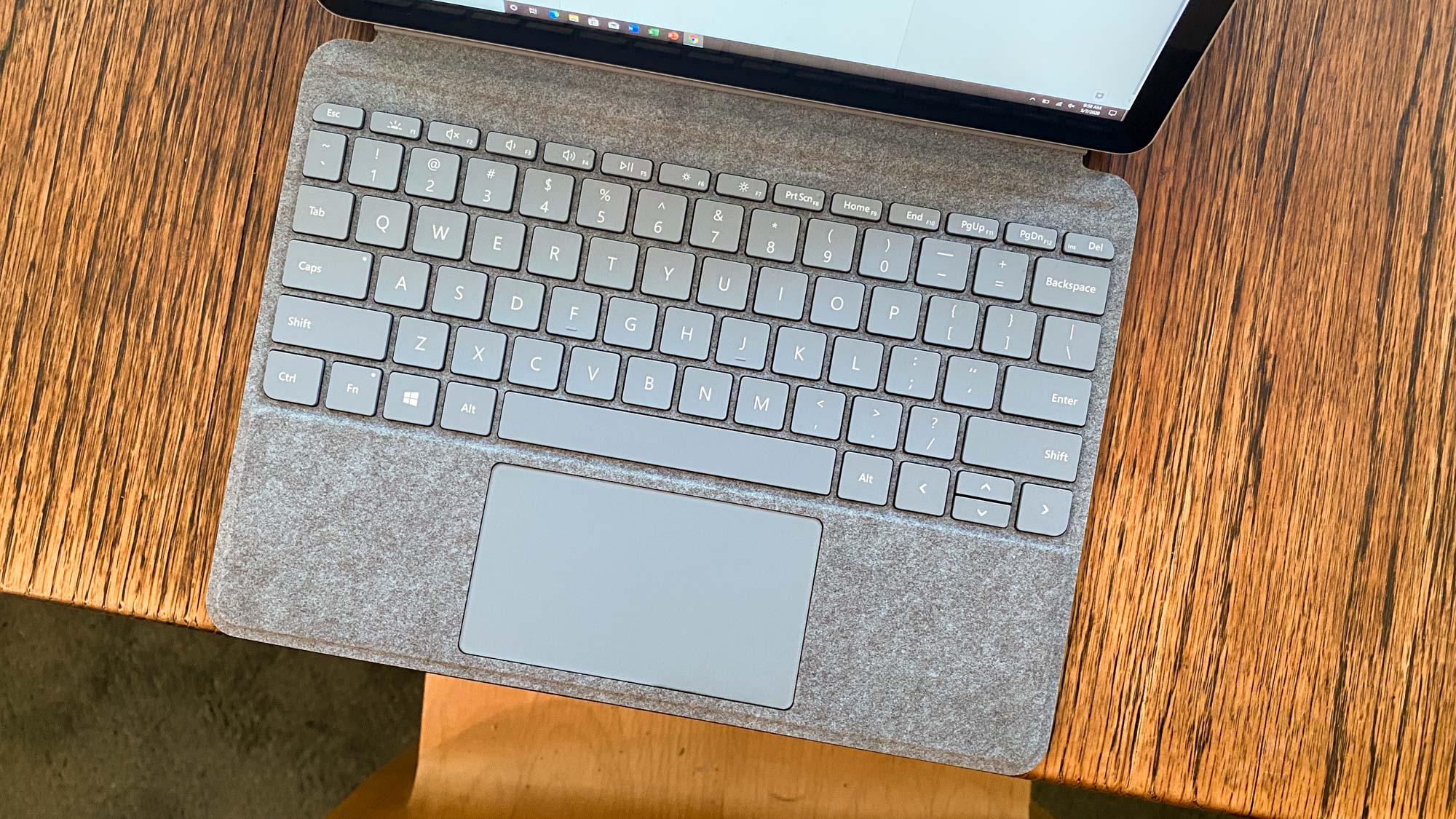
That dip is likely tied to how the keys are a little small and packed in tightly (causing typos and errors) and how the keyboard defaults to sitting at an angle. This means that you're tapping against it with room underneath, which makes the keyboard deck move. That all being said, I can see myself getting used to this keyboard over time, especially since it allows the Go 2 to be so portable and thin.
The Type Cover touchpad is a little on the small side at 3.8 x 2.2 inches, but it offers smooth scrolling and speedy recognition of Windows 10 navigation gestures. It's got that traditional see-saw design where the top part doesn't click down, which may take some getting used to if you're like me and always disable tap to click.
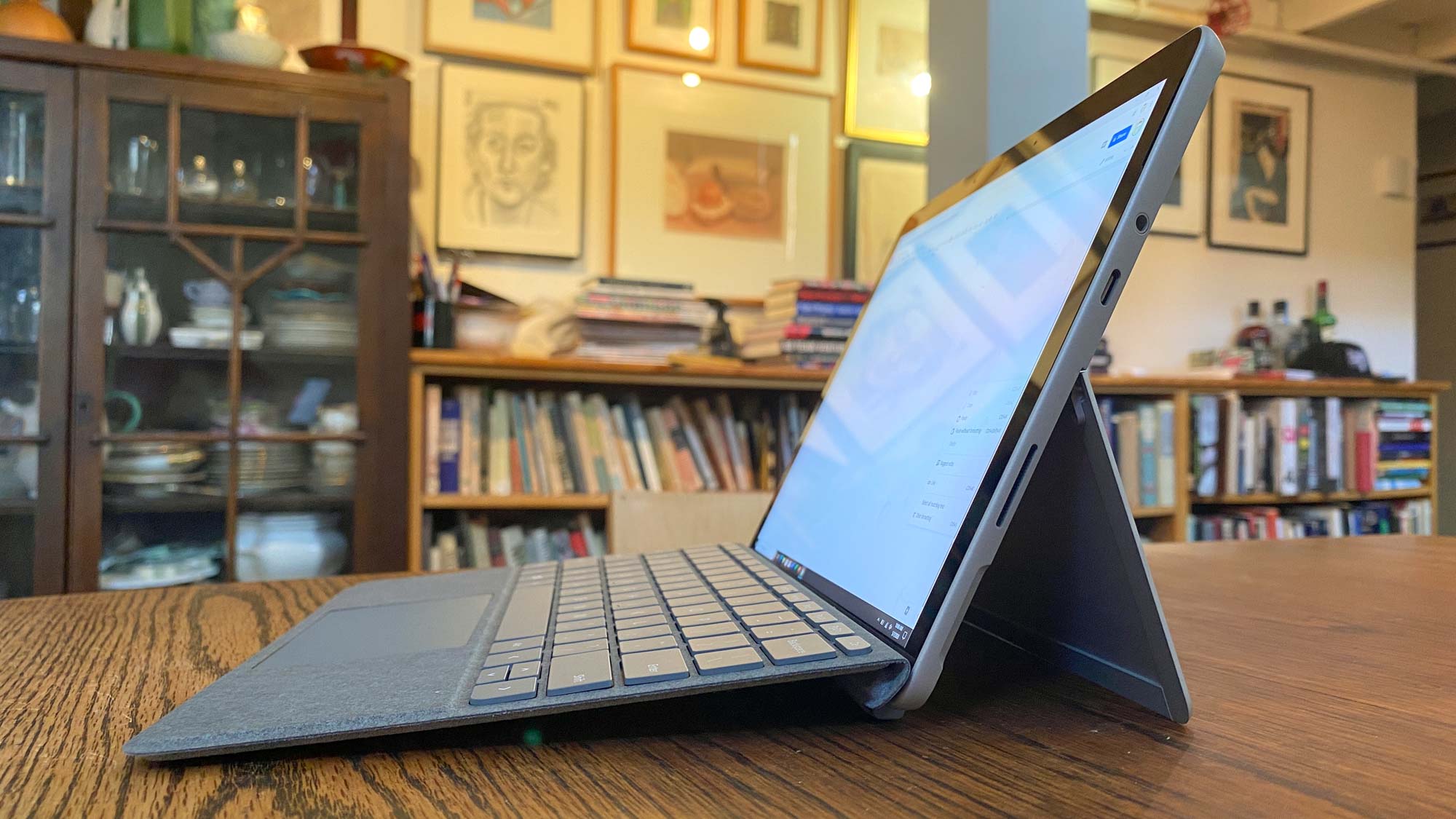
The Surface Go 2 also supports the Microsoft Surface Pen, which costs $99 and has neat programmable shortcuts to Windows 10's inking features. We did not test one for this review.
Microsoft Surface Go 2: Cameras and Windows Hello
The Surface Go 2 sports a pair of cameras, and while you get great results from one, the other has significant flaws. Let's start with the most important: the 5-megapixel front-facing camera that kicks the butt of practically every single laptop webcam I've tested in 5-plus years of being a tech journalist.
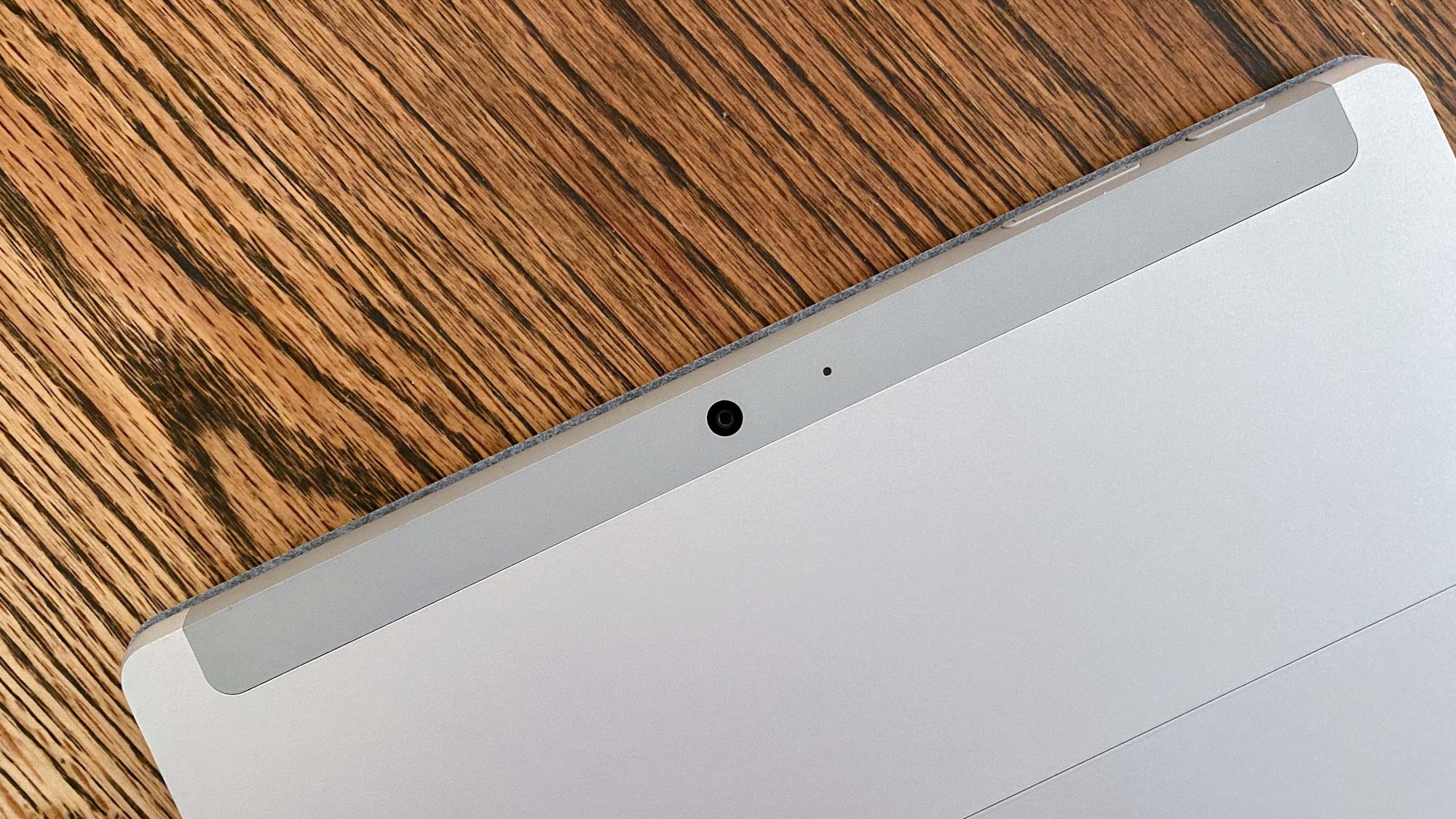
Most laptop webcams range from 0.9 to 1.2MP, and create blurry photos that lack detail. With the Surface Go 2, though, I looked clear enough that I had to make sure to comb my ever-lengthening hair and wipe the sleep from the corners of my eyes. Your friends, family and colleagues on Zoom will actually see you clearly, and they can thank the Surface Go 2 for that.
The other big perk of the Surface Go 2's front camera is even more-seamless Windows Hello support. I've been consistently impressed at how fast the biometric security tool unlocks Windows 10 whenever I lower the Surface Go 2's Type Cover.
Its rear 8-MP camera, however, is more of a mixed bag. When shooting closeups of plants (both real and otherwise) around downtown NYC, the sensor captured accurate hues and fine textures.
Lots of natural lighting, however, proved to be its Achilles' heel. Taking wide photos of facades and vistas, anything bright repeatedly got blown out. For example, some photos that contained both the sky and a row of buildings had one of those two blown out and illegible. Fortunately, the phone in your pocket (like my iPhone 11 Pro Max) can probably do better with natural lighting.
Microsoft Surface Go 2: Audio
The Surface Go 2 can pump out some jams, but it's not a boombox. Its 2-watt stereo speakers support Dolby Audio Premium, and can produce enough volume to fill up my small makeshift office, but not enough to get drowned out by the errant motorcycle driving outside.
For example, Andre 3000's vocals sounded clear on UGK's "International Player's Anthem," but when the bass came in, it was on the softer side, like a polite handshake when it should be a sonorous high-five. Similarly, guitar riffs and vocals on Hayley Williams' "Sudden Desire" sounded decent, but it didn't have the thump or intensity I've heard in various other speakers and headphones.
When I turned the volume up to 100 to try and compensate for its slight sound, a bit of distortion emitted from low-end bass, but it wasn't enough to distract from the music.
Microsoft Surface Go 2: Performance
We saw OK multitasking performance out of the Surface Go 2, which is equipped with the Intel Core m3-8100Y and 8GB of RAM that's rated for 64% higher CPU performance over the entry-level Pentium Gold chip.
I saw no lag when I split my screen between a dozen Chrome tabs (including this review in a Google Doc) and a 1080p YouTube video with Slack and Spotify open in the background. Once I added a couple more tabs, though, I saw a little lag as the system loaded older pages as I opened them.
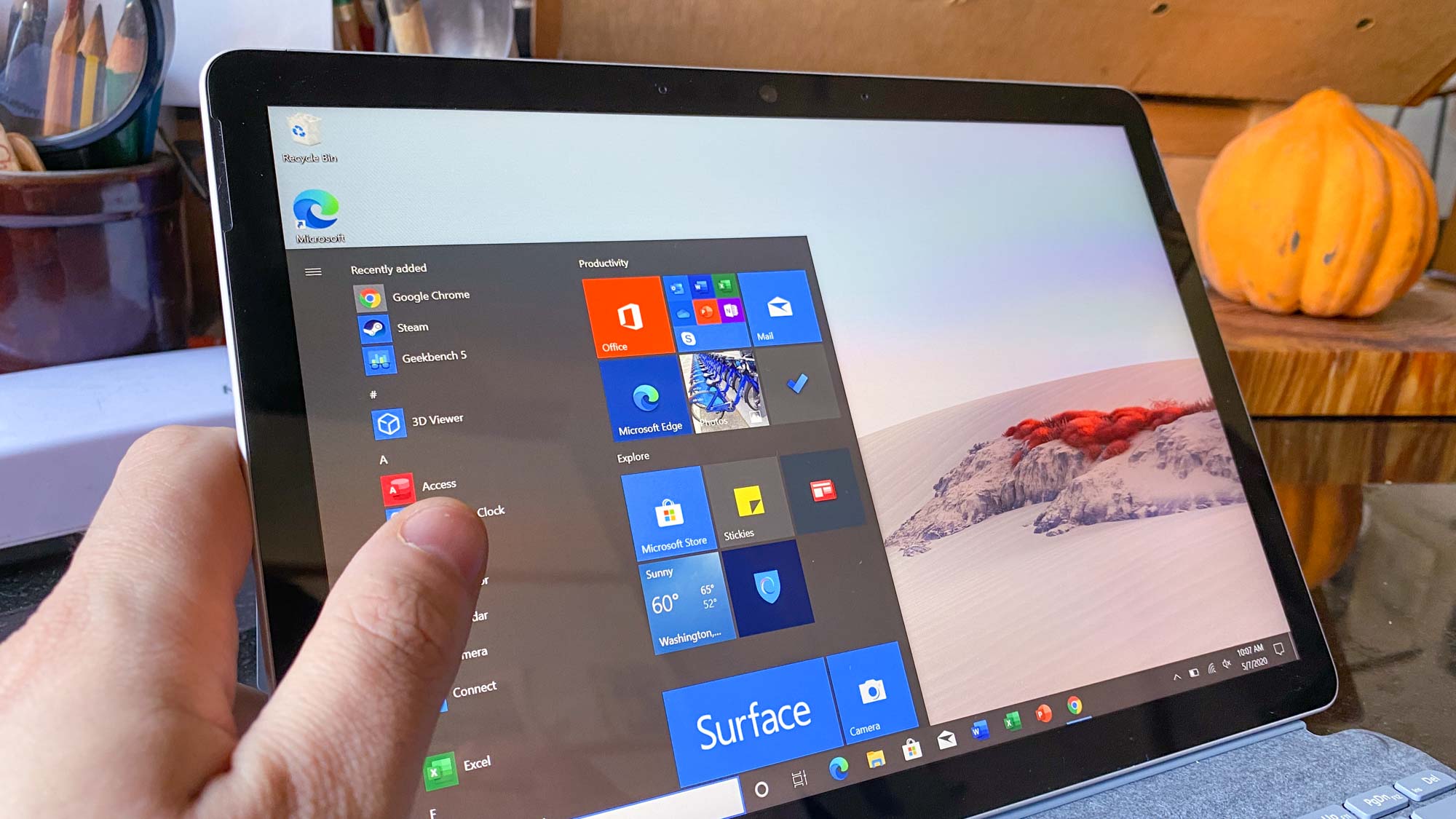
On the Geekbench 4.3 general performance benchmark, the Surface Go 2 eked out a mere 6,815. That' well behind the 11,471 from the iPad Air (A12 Bionic), the 10,387 from the Galaxy Tab S6 (Qualcomm Snapdragon 855) and the 17,225 from the Surface Pro 7 (which sports a much more powerful Core i5-1035G4 CPU).
The Surface Go 2's 128GB SSD took 28.2 seconds to complete our file duplication test, which translates to a speed of 180 MBps. The Surface Pro 7 ate its lunch again, with its 256GB SSD posting a speed of 267 MBps.
Similarly, the Surface Go 2's integrated Intel UHD 615 Graphics didn't wow on the Dirt 3 racing game test, hitting a less-than-playable 16.37 frames per second. The Surface Pro 7's Intel Iris Plus graphics helped it exceed our 30 fps smoothness threshold at 36 fps.
Microsoft Surface Go 2: Software
If you want the real Windows 10 experience from the Surface Go 2, you'll want to take the one-time step to turn off S Mode, which limits you to just use Windows Store applications and goes heavy on Microsoft Edge. All of our testing was done after turning off S Mode, as you can't run any third party benchmarks on it.
Unless you're giving the Surface Go 2 to someone who often downloads malware-ridden applications off the internet, you won't miss Windows 10 S.
The Surface Go 2 also includes a newly updated Camera app that makes the 8-megapixel rear-facing camera a document and white-boards scanning machine. You can tap on the Document icon to use it, and use the Surface Pen (or any other compatible stylus) to edit your document.
Microsoft Surface Go 2: Battery life
The Surface Go 2 has solved its predecessor's battery life problem, and offers all day endurance. On our web-surfing test (at 150 nits of brightness), the Surface Go 2 made it 11 hours and 39 minutes, beating the Surface Go (6:06), Surface Pro 7 (7:52) and Samsung Galaxy Tab S6 (8:58). It's even within spitting distance of the iPad Air (11:54).
Microsoft Surface Go 2: Verdict
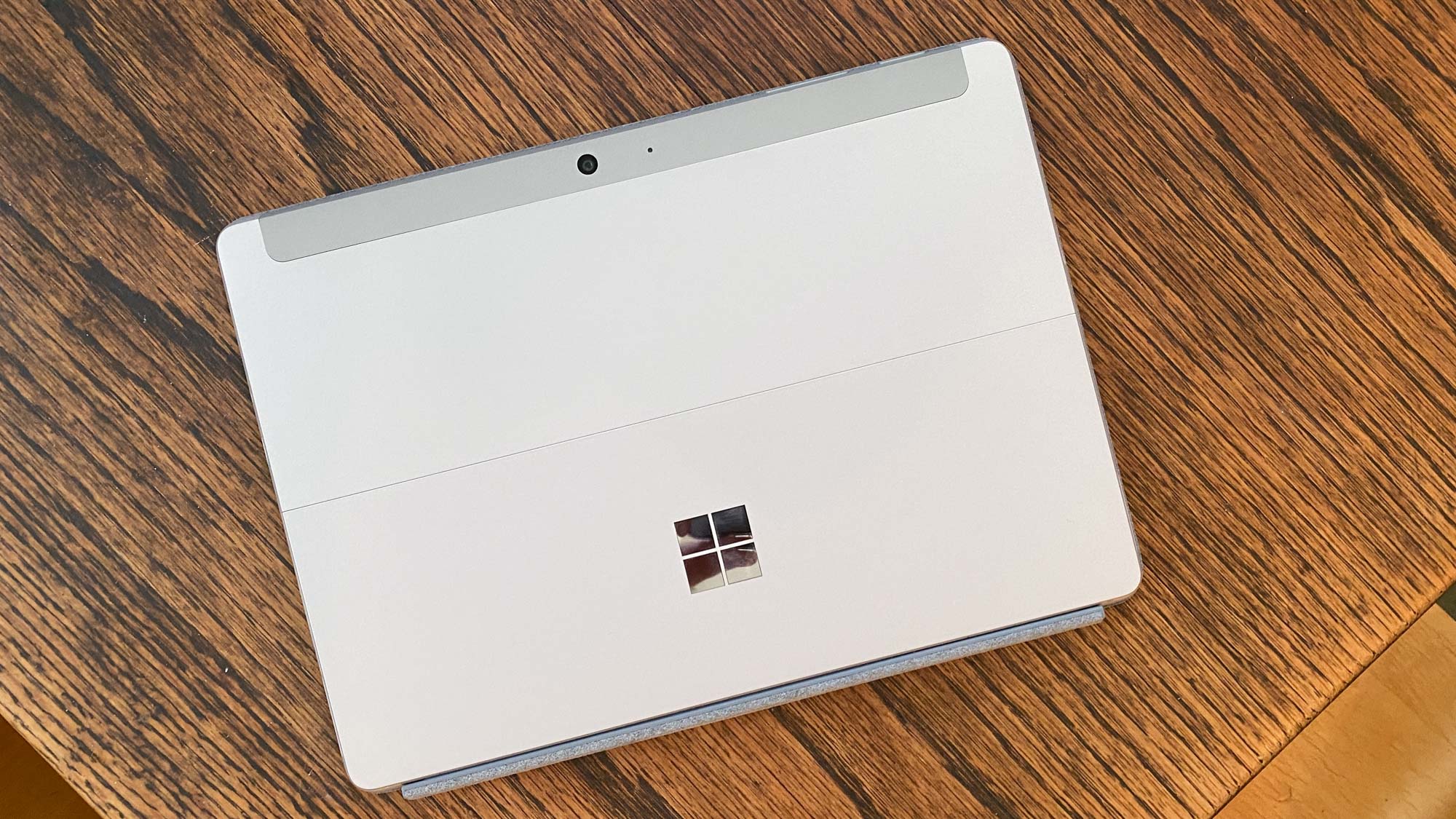
The Microsoft Surface Go 2 finally realizes the promise of the original Surface Go. Its bigger screen, smaller bezels and longer battery life (with an optional performance boost from the Core m3 CPU) add up to a sub-$800 2-in-1 that can handle a lot. Power users may think twice when looking at how it stacks up against the Pro 7 and the iPad Air.
The Surface Pro 7 can be customized for much faster performance (the model we compared here costs $1,119, before Type Cover) though you're trading away hours of battery life. If you can be productive in iPadOS, you get a better screen, more speed and storage with the iPad Air, but it too costs more ($808 with Smart Keyboard).
But as you've seen in this Microsoft Surface Go 2 review, Microsoft's made a solid Surface 2-in-1 for those who don't want to pay Pro prices. And, importantly for everyone working from home right now, it's got a webcam made for today, not a decade ago.
Next: One of editors thinks you should get a gaming laptop as your next work or college laptop.
- Stay protected with the best Windows 10 VPN

Henry is a managing editor at Tom’s Guide covering streaming media, laptops and all things Apple, reviewing devices and services for the past seven years. Prior to joining Tom's Guide, he reviewed software and hardware for TechRadar Pro, and interviewed artists for Patek Philippe International Magazine. He's also covered the wild world of professional wrestling for Cageside Seats, interviewing athletes and other industry veterans.
-
y2kgtp Tablets these days are trying too hard to be a notebook.Reply
Neglected to state the 8gb version costs about $550, not $399 for the 4gb. Add in the pretty much required keyboard for $129 and your pushing near $700 for .....a 10.5" device. -
daleos Already have a Surface Pro. My old Nexus 10 is on it's last legs so looking for a new sofa browsing gadget. Windows device looking like a good option because I can block youtube ads on it.Reply -
josher14 What settings and resolution were you trying to play dirt 3 at? I'm gaming on the go2 at half res 960x640 using custom resolution utility.. i've tested league and dota 2 so far.. search josher14 on youtube if you want to see me play horrible hahaReply -
pshamlin I've had a Surface Go 2 for about a week now and love it, and this review rings quite true to me. (I have the m3 128 Gig wifi model.)Reply
I don't regard it as a "budget" laptop. For me, it's a premium second computer for use on the go.
I've been surprised how well it runs by music production/digital art/programming software -- well enough that I can get serious work done on it when I'm away from my home studio.
I'm very happy with it. -
raymon8 I agree it is a very nice and compact machine. Battery life is terrible. 2.5 hours Outlook doing just emails is what i get. Only Edge stand alone a little bit better but totally unuseable. I am sorry i believed the hype.Reply
